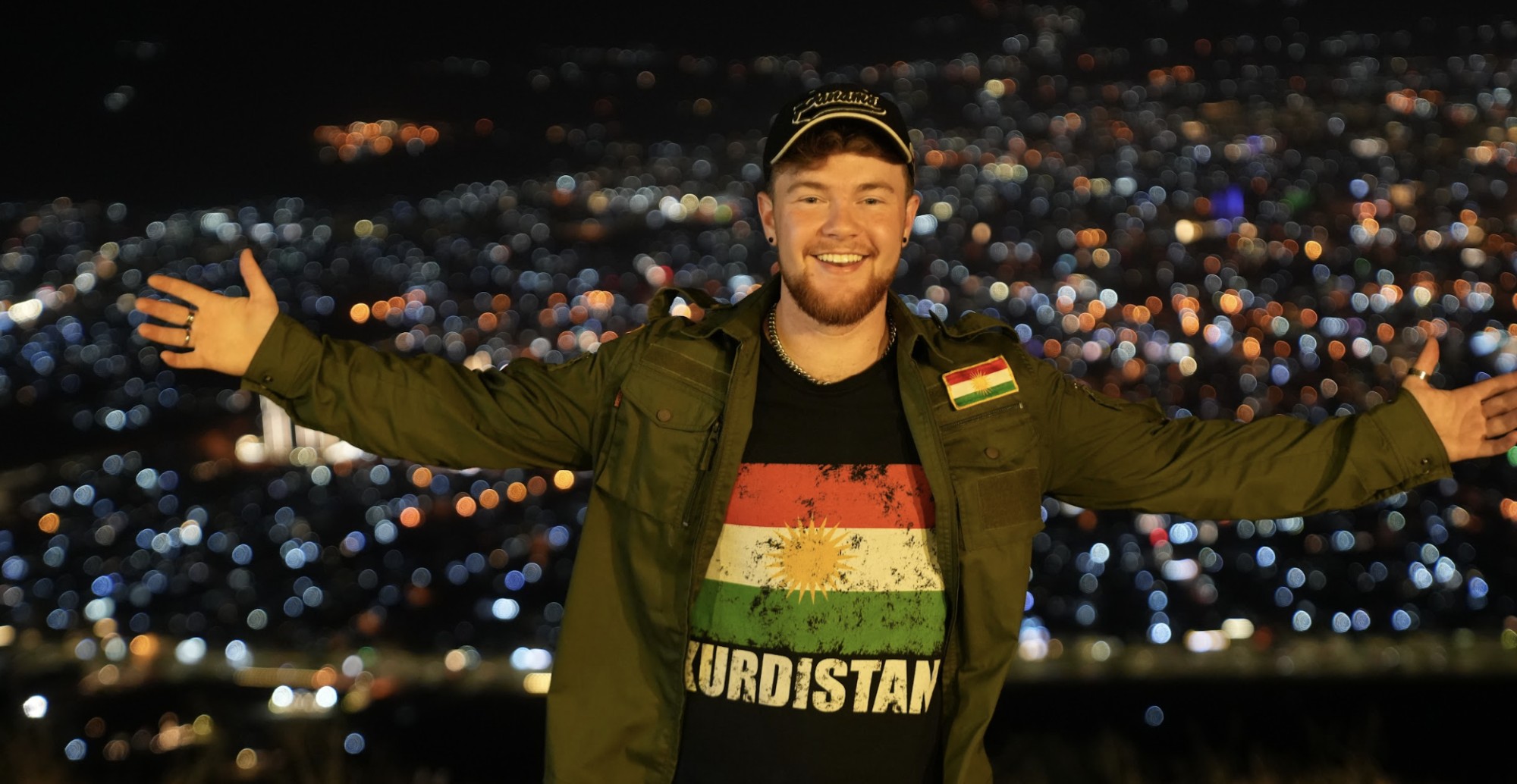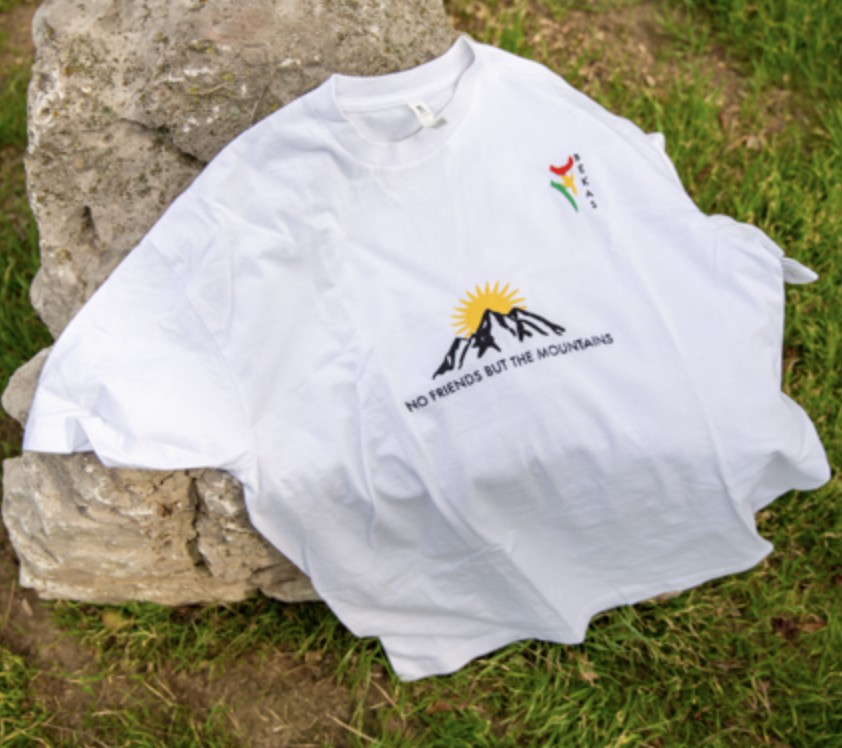Ardishir Rashidi-Kalhur’s journey from Iranian Kurdistan to becoming a leader engineer and inventor in aeronautical design in the United States is a testament to fearlessness, hard work, ingenuity, and obviously brilliance. His life is the quintessential American immigrant success story, but it also traces the contours of Kurdish history, bringing to life the hardships that Kurds have faced over the last several decades.
Early life
Born on October 22, 1953, into the distinguished Rashidi-Kalhur family in Gilane Gharb in Rojhalt, Kurdistan, Rashidi-Kalhur’s his ancestral land was a region called Kufravour. He attended elementary school from the first to third grades there but, upon his father’s retirement, moved to Sarpole Zehab, where he finished the fourth grade, before returning to Kufravour for the fifth and sixth grades. Since there was no high school in Kufravour, he returned to Sarpole Zehab to complete seventh grade and then attended high school in Dezful, Khuzistan, living with his elder brother who was serving in the Iranian Air Force at the time.
Summers were spent in various parts of Kermanshah in Rojhalat, visiting families and witnessing the lives and living conditions of the Kurdish people for whom he developed a great love and incredible respect. Like the rest of the people in Iran, they lived under the oppressive dictatorship of the Shah’s regime, who ruled the entire country with an arrogant pomposity, imposition of fear, injustice, and economic and cultural discrimination.

Leaving Iran
After high school, and having witnessed the deteriorating living conditions under the Shah as well as the coming signs of the 1979 revolution, he decided to leave in 1974 to emigrate to Turkey. Of course, he had big dreams for his future, while his love for and memories of the peoples of Kurdistan imbued him with such an energy that propelled him to be fearless in the face difficulties and hardship along his journey.
Upon arriving in Istanbul, he went to the university cafeteria to meet other Iranian students and introduced himself as being a Kurd from Iranian Kurdistan. At the mere mention of the word Kurdistan in front of Turkish students, he encountered a sudden change of attitude and outright hostile aggression, which surprised him. Threats almost came to physical blows – one young man against a gang of hoodlums who were supposed to be educated Turks.
Upon returning to his hotel, he concluded that living in such an unreasonable culture was untenable, so the next day he purchased a bus ticket to make his way toward Germany, arriving in Munich in October 1974. From there he went to Berlin, which had a reputation as an international city replete with great universities. There he worked extremely hard and, within a matter of two months and much to the surprise of both foreign and Iranian students, became conversational in German.

American success story
It was at the German language school where he met his future wife Wendy Miller, now Dr. Wendy Rashidi, to whom he has been married for 48 years. His deep love for her drove him to learn English and, after three months of traveling together throughout Europe and with her help, he gained admission to Eastern Illinois University in the United States.
After receiving a student visa, Rashidi-Kalhur arrived in Chicago in September 1975. Wendy and he married and then graduated four years later, with him receiving a bachelor’s degree in physics and Wendy in biology with high honors. From there, they moved to the University of Illinois in Urbana-Champaign in 1981, where he received a second degree in mechanical engineering and Wendy completing her medical degree in 1984. By this stage, they had two sons: seven-year-old Aryan and five-year-old Arjang. It was during this time that Rashidi-Kalhur laid the groundwork for his vision, working as system design engineer and designing induction heat treat equipment.
In 1984, the family moved to Southern California, where Wendy completed her residency in family medicine at Kaiser Permanente. With his previous work in the Midwest, Rashidi-Kalhur was hired by aerospace companies that designs flight instruments, including altimeters, air-speed indicators, and pressure sensors and switches. In 1991, he received the Engineer of the Year award from the Thorn-EMI Company for designing a depth sensor for the U.S. Navy’s Mark-50 torpedo program.
In 1992, Rashidi-Kalhur joined GM Enterprises as their chief engineer. There, he designed and patented a vacuum heat-treating furnace with a movable hot zone with high energy efficiency and rapid quench capabilities, a first-of-its-kind invention. Five years later, in 1997, he started his own consulting company, RDI Engineering, and worked with a company in Burbank, California as designer and program manager, designing fluid control devices for the International Space Station, JAXA (the Japanese equivalent of NASA), and the Lockheed Martin Orion Program, to develop new mission safety valves based on heritage technologies.
In 2015 his company RDI Engineering received a contract from Lockheed Martin to work on NASA’s Artemis program components for the Propulsion and Reaction Control System. The successful mission of the Artemis I, was accomplished between November and December of 2022, operating with RDI Engineering designs on board of the Orion Capsule and the European Space Agency built Service Module.

Kurdish American Education Society
Along with his professional activities, Rashidi-Kalhur started a non-profit organization (NGO) in 1997 called the Kurdish American Education Society (KAES), which aimed to promote awareness of Kurdish history and society to the American public and political leadership. This organization also worked to help Kurds become the rightful owners of their cultural heritage, land, and natural resources as well as the wealth that comes with it.
KAES sought to improve both the Kurds’ physical and spiritual life as well as promote knowledge of the culture through educational programs, writings, and forming friendships with churches and NGOs, in order to contribute to the betterment and well-being of the world.
The drive to establish KAES was borne from the tragedy of Halabja, committed in 1988 when the world, especially the American public, became aware of the deplorable genocidal attack by Saddam regime against the Kurdish population in his attempts to eradicate them. In its 25 years history, KAES has held many cultural and educational programs a partial list of which is available from KAES. With its annual budget, KAES gives out annual scholarships and provides humanitarian assistance to many just causes.

In 1997, Rashidi-Kalhur joined a local Chapter of the UN Association of the United States of America (UNA-USA) and served as president of the organization at every regional level and nationally as a distinguished Board member. In this capacity, he was able to hand over to the UN the results of the 2005 Kurdistan Referendum Movement calling for Kurdistan’s independence. When the UNA-USA merged with the UN Foundation, he served as the bylaw committee chair and proposed the establishment of new standard operating procedures.
In 2004, he was elected as President of the Claremont University Club, where he also served as Program Chair for five years.
In 2019, KAES planned a conference that would have been held at the California Institute of Technology to address the problems and issues facing Kurdish society, seeking solutions from the most highly educated and professional Kurds living in the United States. This event was postponed due to the Covid-19 pandemic, but KAES published a series of PowerPoint slides titled “Barnamay Bardawami Kurdistan” alongside the United Nations Sustainable Development Goals.
Currently, he works as the owner and President of RDI Engineering and continues to work on future missions for NASA, most notably and recently with the Artemis Program, which is destined to land the first woman on the moon by 2025 and has further aims to launch missions to the Mars by 2030.
In his spare time, Rashidi-Kalhur likes to write historical poetic fiction.
Rahim Rashidi, a Washington DC-based Kurdish journalist, is widely recognized as "Mr. Kurd." He is focused on Kurdish affairs in Kurdistan and abroad.

